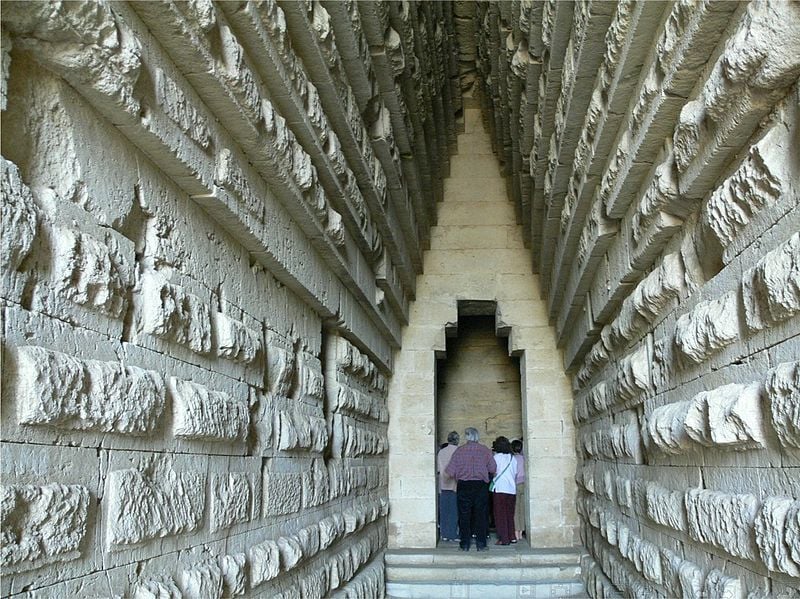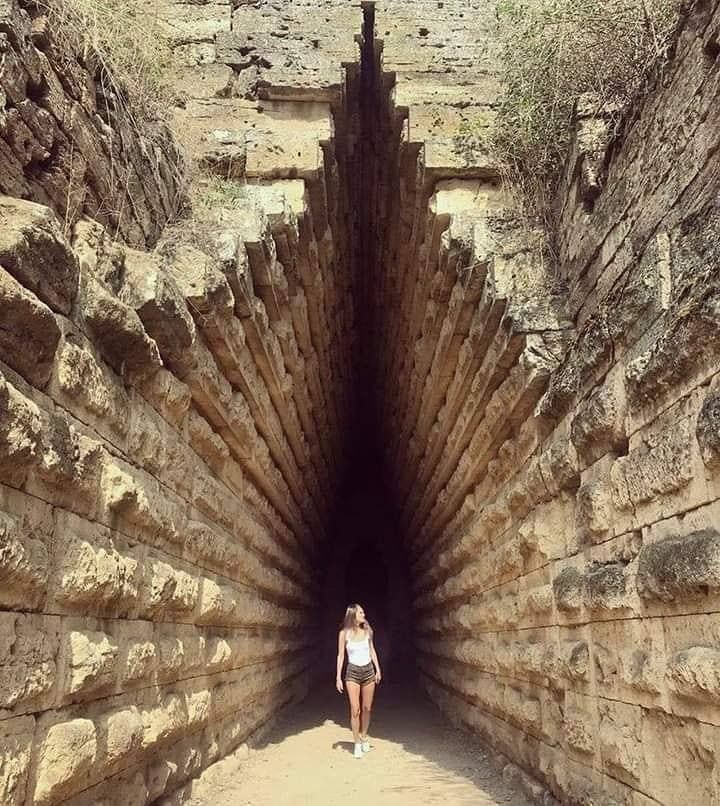Around 2,700 years ago, ancient Greek city-states began establishing colonies along the Crimean Peninsula, encountering the indigenous burial traditions of the region. The Greeks came across the tumuli or kurgans, large burial mounds that had long been used by the local Scythians. These burial structures, used to mark the graves of powerful rulers and nobles, became a point of contact between Greek settlers and the local Scythian culture. Among these burial mounds, the Royal Kurgan (also known as the Tsarskiy Kurgan) stands out as a remarkable monument from the 4th century BCE, located in the city of Kerch, once the ancient Greek colony of Panticapaion (Παντικάπαιον).
The Monumental Structure of the Royal Kurgan
The Royal Kurgan is an imposing structure, rising nearly 20 meters in height and with a base perimeter of approximately 250 meters. The mound is built with careful architectural planning, characteristic of both the Greek influence and the local Scythian burial practices. At its core is a 36-meter-long corridor (known as a dromos), a feature typical of Greek tomb construction. This corridor leads to a rectangular burial chamber, believed to be the tomb of an important ruler from the Bosporan Kingdom, an ancient kingdom that flourished in the region during this time.

The chamber and its entrance corridor were constructed using yellowish limestone blocks, showcasing the advanced building techniques of the period. Over this structure, a significant amount of earth—approximately 17 meters—along with stones, was piled to form the mound, creating a towering monument visible for miles. The sheer scale of the Royal Kurgan emphasizes the importance of the ruler interred within, indicating the power and influence of the Bosporan elite.
Excavation and Looting of the Royal Tomb
The Royal Kurgan was excavated in the 19th century, revealing valuable insights into the region’s past. Archaeologists discovered remnants of a wooden sarcophagus within the burial chamber. However, the tomb had already been looted, likely centuries before the excavation took place. This is evidenced by the absence of the tomb’s original artifacts and treasures, which would have accompanied the ruler into the afterlife. Looting of royal tombs during antiquity was not uncommon, as these burial sites were often seen as repositories of wealth and power.

Despite the looted state of the tomb, the Royal Kurgan continues to fascinate archaeologists and historians. The size and construction of the mound reflect the importance of the Bosporan Kingdom, and the burial customs reveal much about the intersection of Greek and Scythian cultures. The Royal Kurgan stands as a testament to the grandeur of the Bosporan elite and their influence over the region, even in death.
The Bosporan Kingdom’s Legacy
The Bosporan Kingdom, which thrived from the 5th century BCE to the 4th century CE, was a crucial center of Greek culture and trade in the Black Sea region. Situated at a strategic crossroads between the classical Greek world and the nomadic Scythians, the Bosporan Kingdom played a vital role in blending Greek traditions with those of the indigenous peoples of the steppe.

While much of the original contents of the Royal Kurgan were lost to looting, the monument remains a powerful symbol of the Bosporan Kingdom’s legacy. It highlights the kingdom’s cultural significance, its role as a cultural and political hub, and the influence it exerted over the region. The mound also serves as a reminder of the Greek colonization of the Crimean Peninsula and the ongoing interaction between Greek settlers and the local Scythian tribes.

The Royal Kurgan continues to be a focal point for archaeological exploration, providing a rich context for understanding the ancient dynamics of Greek settlers and indigenous populations. Although its treasures have long since been stolen, the kurgan itself stands as a monumental tribute to the rulers of the Bosporan Kingdom, offering a glimpse into the history and culture of one of antiquity’s most influential crossroads.
Conclusion: A Monument to an Overlooked Civilization
The Royal Kurgan is not only an extraordinary archaeological site but also a window into the past, offering insights into the complex relationship between the ancient Greek settlers and the indigenous peoples of the Crimea. Though much of its original contents have been lost, its grandeur and historical significance endure. As one of the largest and most impressive kurgans in the region, the Royal Kurgan remains a lasting symbol of the Bosporan Kingdom’s power, cultural sophistication, and strategic importance in the ancient world.

